Themed collection In celebration of Kazunari Domen’s 65th birthday, 2018

Surface engineering of graphitic carbon nitride polymers with cocatalysts for photocatalytic overall water splitting
Overall water splitting for the stoichiometric generation of H2 and O2 has been achieved by rational cocatalyst modification of g-C3N4 polymers to modulate the surface redox reaction kinetics.
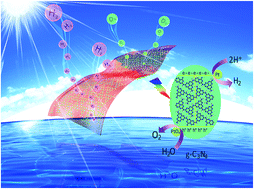
Chem. Sci., 2017,8, 5261-5274
https://doi.org/10.1039/C7SC01747B
Templated dewetting: designing entirely self-organized platforms for photocatalysis
Noble metal dewetting on self-organized TiO2 nanotubes – nanoscopic design of photocatalysts towards green H2 generation.
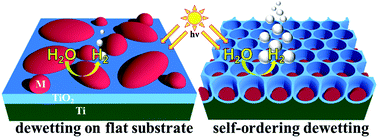
Chem. Sci., 2016,7, 6865-6886
https://doi.org/10.1039/C6SC02555B
Photoelectrocatalytic H2 evolution from integrated photocatalysts adsorbed on NiO
A new approach to increasing the faradaic efficiency of dye-sensitised photocathodes for H2 evolution from water is described, using integrated photocatalysts based on a ruthenium 4,4′-diethoxycarboxy-2,2′-bipyridine chromophore linked via terpyridine or triazole to a Pd or Pt-based H+ reduction catalyst.
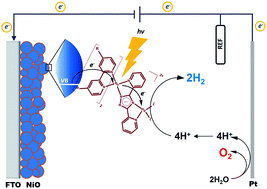
Chem. Sci., 2019,10, 99-112
https://doi.org/10.1039/C8SC02575D
Understanding the visible-light photocatalytic activity of GaN:ZnO solid solution: the role of Rh2−yCryO3 cocatalyst and charge carrier lifetimes over tens of seconds
Time-resolved spectroscopies reveals remarkably long charge carrier lifetime in GaN:ZnO solid solution leading to hole accumulation key to water oxidation.
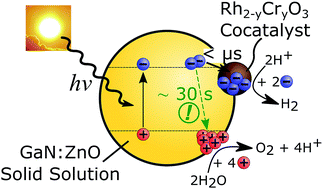
Chem. Sci., 2018,9, 7546-7555
https://doi.org/10.1039/C8SC02348D
Insights into the mechanism and aging of a noble-metal free H2-evolving dye-sensitized photocathode
Co-grafting of a cobalt diimine–dioxime catalyst and push–pull organic dye on NiO yields a photocathode evolving hydrogen from aqueous solution under sunlight, with equivalent performances compared to a dyad-based architecture using similar components.
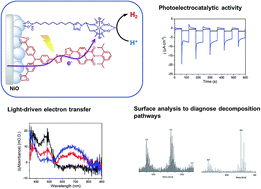
Chem. Sci., 2018,9, 6721-6738
https://doi.org/10.1039/C8SC00899J
Operando deconvolution of photovoltaic and electrocatalytic performance in ALD TiO2 protected water splitting photocathodes
The dual-working-electrode technique enables the deconvolution of the intrinsic properties of the buried p–n junction and the electrocatalyst on the surface for water splitting photocathodes.
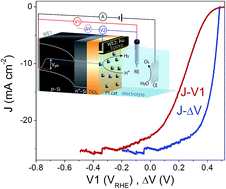
Chem. Sci., 2018,9, 6062-6067
https://doi.org/10.1039/C8SC01453A
Phase-segregated NiPx@FePyOz core@shell nanoparticles: ready-to-use nanocatalysts for electro- and photo-catalytic water oxidation through in situ activation by structural transformation and spontaneous ligand removal
The phase-segregated NiPx@FePyOz core@shell NPs act as a colloidally stable, ready-to-use, and excellent OER active transition metal phosphide-based catalyst.
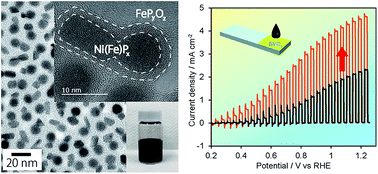
Chem. Sci., 2018,9, 4830-4836
https://doi.org/10.1039/C8SC00420J
Investigation of excited state, reductive quenching, and intramolecular electron transfer of Ru(II)–Re(I) supramolecular photocatalysts for CO2 reduction using time-resolved IR measurements
Time-resolved IR spectra indicated fast electron transfer from the reduced photosensitizer to the catalyst.
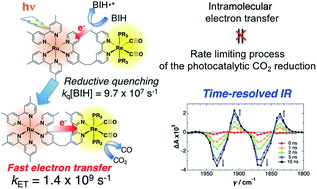
Chem. Sci., 2018,9, 2961-2974
https://doi.org/10.1039/C7SC05338J
Solar H2 generation in water with a CuCrO2 photocathode modified with an organic dye and molecular Ni catalyst
H2 generation using a Ni catalyst on dye-sensitised CuCrO2 highlights the benefits of using delafossite semiconductors for solar fuel production.
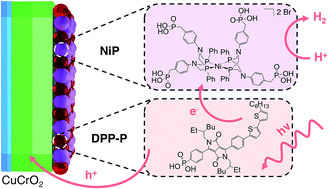
Chem. Sci., 2018,9, 1439-1447
https://doi.org/10.1039/C7SC04476C
Synthesis of Os(II)–Re(I)–Ru(II) hetero-trinuclear complexes and their photophysical properties and photocatalytic abilities
Novel Os(II)–Re(I)–Ru(II) hetero-trinuclear complexes, which can absorb a wide range of visible light and induce durable CO2 reduction, were synthesised.
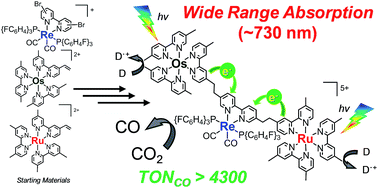
Chem. Sci., 2018,9, 1031-1041
https://doi.org/10.1039/C7SC04162D
Photocatalytic oxidation of benzene to phenol using dioxygen as an oxygen source and water as an electron source in the presence of a cobalt catalyst
The present study reports the first example of photocatalytic hydroxylation of benzene with O2 and H2O, both of which are the most green reagents, under visible light irradiation to afford a high turnover number.
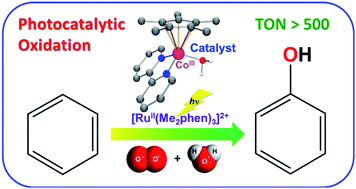
Chem. Sci., 2017,8, 7119-7125
https://doi.org/10.1039/C7SC02495A
Efficient photocatalytic carbon monoxide production from ammonia and carbon dioxide by the aid of artificial photosynthesis
NH4HCO3 was determined to be an effective electron donor for the photocatalytic conversion of CO2, whereby CO2 can be captured, stored, and efficiently converted into CO.
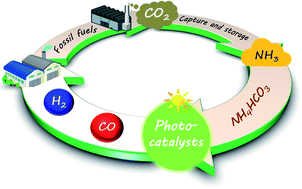
Chem. Sci., 2017,8, 5797-5801
https://doi.org/10.1039/C7SC01851G
Photoelectrocatalytic H2 evolution in water with molecular catalysts immobilised on p-Si via a stabilising mesoporous TiO2 interlayer
A versatile platform for the immobilisation of molecular catalysts on a readily-prepared Si photocathode with a mesoporous TiO2 layer is reported.
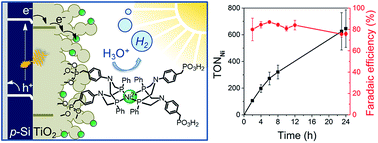
Chem. Sci., 2017,8, 5172-5180
https://doi.org/10.1039/C7SC01277B
Hybrid photocathode consisting of a CuGaO2 p-type semiconductor and a Ru(II)–Re(I) supramolecular photocatalyst: non-biased visible-light-driven CO2 reduction with water oxidation
A new Ru(II)–Re(I)/CuGaO2 hybrid photocathode was developed and combined with a CoOx/TaON photoanode to drive non-biased visible-light-driven CO2 reduction with water oxidation.

Chem. Sci., 2017,8, 4242-4249
https://doi.org/10.1039/C7SC00940B
Visible light-induced water splitting in an aqueous suspension of a plasmonic Au/TiO2 photocatalyst with metal co-catalysts
We found that plasmonic Au particles on titanium(IV) oxide (TiO2) act as a visible-light-driven photocatalyst for overall water splitting free from any additives.
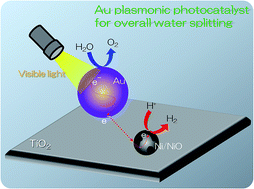
Chem. Sci., 2017,8, 2574-2580
https://doi.org/10.1039/C6SC05135A
Achievement of visible-light-driven Z-scheme overall water splitting using barium-modified Ta3N5 as a H2-evolving photocatalyst
Barium-modified Ta3N5 for the promotion of proton reduction is first employed as a H2-evolving photocatalyst for visible-light-driven Z-scheme overall water splitting.

Chem. Sci., 2017,8, 437-443
https://doi.org/10.1039/C6SC02750D
Rhenium(I) trinuclear rings as highly efficient redox photosensitizers for photocatalytic CO2 reduction
Trinuclear Re(I)-rings were applied as redox photosensitizers in visible light-driven CO2 reduction in tandem with various catalysts, i.e., Re(I)-, Ru(II)- and Mn(I)-diimine metal complex. The quantum yields for the Ru(II) and Mn(I) catalysts were the among highest reported.
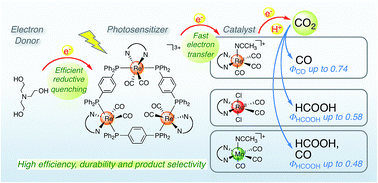
Chem. Sci., 2016,7, 6728-6739
https://doi.org/10.1039/C6SC01913G
Tantalum nitride films integrated with transparent conductive oxide substrates via atomic layer deposition for photoelectrochemical water splitting
The first example of tantalum nitride electrodes on transparent conductive oxide substrates, which enables solar water splitting, is presented.
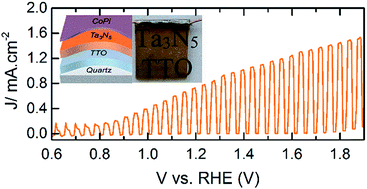
Chem. Sci., 2016,7, 6760-6767
https://doi.org/10.1039/C6SC02116F
Understanding the anatase–rutile phase junction in charge separation and transfer in a TiO2 electrode for photoelectrochemical water splitting
The key to phase junctions for efficient charge separation is to consider both the phase alignment and interface structure.
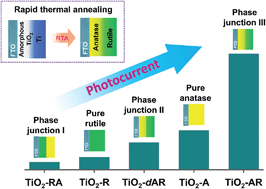
Chem. Sci., 2016,7, 6076-6082
https://doi.org/10.1039/C6SC01611A
Thin film transfer for the fabrication of tantalum nitride photoelectrodes with controllable layered structures for water splitting
Controlled layered structures fabricated by thin film transfer enhance the photoelectrochemical water splitting on Ta3N5 photoanodes.
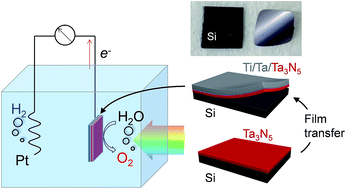
Chem. Sci., 2016,7, 5821-5826
https://doi.org/10.1039/C6SC01763K
Photoelectrochemical hydrogen production in water using a layer-by-layer assembly of a Ru dye and Ni catalyst on NiO
Layer-by-layer assembly of a Ru dye and Ni catalyst on a p-type NiO photocathode enables photoelectrochemical H2 generation in water.

Chem. Sci., 2016,7, 5537-5546
https://doi.org/10.1039/C6SC00715E
Visible-light-driven CO2 reduction on a hybrid photocatalyst consisting of a Ru(II) binuclear complex and a Ag-loaded TaON in aqueous solutions
A hybrid photocatalytic system consisting of a Ru(II) binuclear complex and Ag-loaded TaON can reduce CO2 to HCOOH by visible light irradiation even in aqueous solution (TONHCOOH = 750, ΦHCOOH = 0.48%).
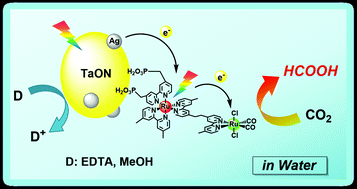
Chem. Sci., 2016,7, 4364-4371
https://doi.org/10.1039/C6SC00586A
Precious-metal free photoelectrochemical water splitting with immobilised molecular Ni and Fe redox catalysts
Splitting water into hydrogen and oxygen with 3d transition metal molecular catalysts and light has been accomplished.
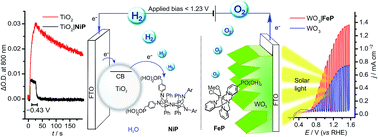
Chem. Sci., 2016,7, 4024-4035
https://doi.org/10.1039/C5SC04863J
Overall water splitting by Pt/g-C3N4 photocatalysts without using sacrificial agents
Direct splitting of pure water into H2 and O2 in a stoichiometric molar ratio of 2 : 1 by conjugated polymers via a 4-electron pathway was established for the first time, as demonstrated here using a g-C3N4 polymer and redox co-catalysts of Pt and Co species.
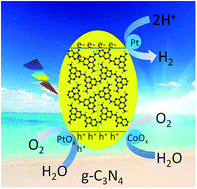
Chem. Sci., 2016,7, 3062-3066
https://doi.org/10.1039/C5SC04572J
Highly efficient, selective, and durable photocatalytic system for CO2 reduction to formic acid
Photocatalytic reduction of CO2 to formic acid with high efficiency, durability, and rate.
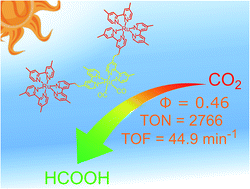
Chem. Sci., 2015,6, 7213-7221
https://doi.org/10.1039/C5SC02018B
Comparison of rhenium–porphyrin dyads for CO2 photoreduction: photocatalytic studies and charge separation dynamics studied by time-resolved IR spectroscopy
A new dyad for photocatalytic CO2 reduction produces ten times more CO and much longer-lived charge-separation than earlier rhenium-porphyrin dyads.
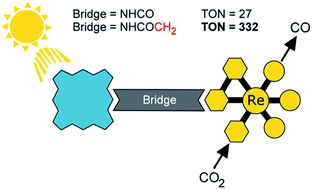
Chem. Sci., 2015,6, 6847-6864
https://doi.org/10.1039/C5SC02099A
Photoanodic and photocathodic behaviour of La5Ti2CuS5O7 electrodes in the water splitting reaction
La5Ti2CuS5O7 embedded into the surface of Au and Ti substrates shows a photocurrent attributable to HER and OER.
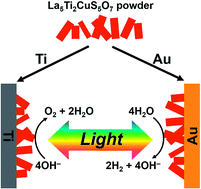
Chem. Sci., 2015,6, 4513-4518
https://doi.org/10.1039/C5SC01344E
Bioinspired design of redox-active ligands for multielectron catalysis: effects of positioning pyrazine reservoirs on cobalt for electro- and photocatalytic generation of hydrogen from water
We report the effects of installing redox-active pyrazines at distinct positions in a series of isostructural Co catalysts.

Chem. Sci., 2015,6, 4954-4972
https://doi.org/10.1039/C5SC01414J
Unravelling the pH-dependence of a molecular photocatalytic system for hydrogen production
The electron-donating ability of the sacrificial agent and the protonation of the catalyst determine the optimum pH for hydrogen production.
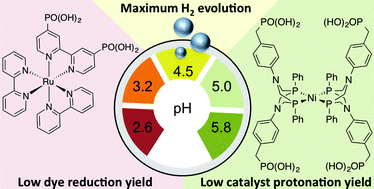
Chem. Sci., 2015,6, 4855-4859
https://doi.org/10.1039/C5SC01349F
Oxygen deficient α-Fe2O3 photoelectrodes: a balance between enhanced electrical properties and trap-mediated losses
Intrinsic doping of hematite through the inclusion of oxygen vacancies (VO) is being increasingly explored as a simple, low temperature route to preparing active water splitting α-Fe2O3−x photoelectrodes.
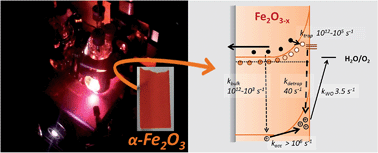
Chem. Sci., 2015,6, 4009-4016
https://doi.org/10.1039/C5SC00423C
Ru(II)–Re(I) binuclear photocatalysts connected by –CH2XCH2– (X = O, S, CH2) for CO2 reduction
New Ru(II)–Re(I) diads with bridging ligands constructed of two diimines connected by –CH2OCH2– or –CH2SCH2– were synthesized and investigated as photocatalysts with enhanced oxidation power.
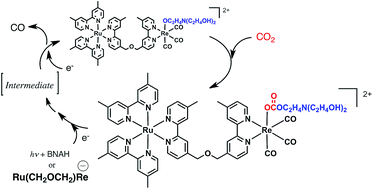
Chem. Sci., 2015,6, 3003-3012
https://doi.org/10.1039/C4SC03710C
About this collection
This year marked the 65th birthday of Professor Kazunari Domen from the University of Tokyo, one of our Chemical Science Associate Editors. To celebrate, we’ve teamed up with Professor Ryu Abe from Kyoto University to put together a collection of Chemical Science articles in the area of photocatalysis and water splitting, featuring work by Domen himself.